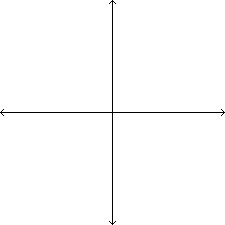Indicate whether the equation represents direct variation, inverse variation, or neither. If it is a variation equation, identify the constant of proportionality.xy = 12
A. inverse variation; k = 12
B. neither
C. inverse variation; k = 
D. direct variation; k = 12
Answer: A
You might also like to view...
Sketch a continuous curve that has the given characteristics.(a) Defined everywhere except on the x-axis, which is a horizontal asymptote, and the y-axis, a vertical asymptote.(b) Decreasing everywhere it is defined(c) Concave downward for ? < x < 0(d) Concave upward for 0 < x < ?(e) f'(1) = f'(-1) = 0 
What will be an ideal response?
Determine whether the given ordered pair is a solution to the given system of equations.(3, -2); 
A. Yes B. No
Verify the identity. =
= 
What will be an ideal response?
Find the corner points for the set of feasible solutions for the constraints given in problem.
?
?
A. ( 0, 0 ), ( 6, 12 ), ( 6, 0 ) B. ( 0, 6 ), ( 0, 12 ), ( 6, 12 ), ( 6, 0 ), ( 4, 0 ) C. ( 0, 0 ), ( 0, 12 ), ( 6, 12 ), ( 6, 0 ) D. ( 0, 0 ), ( 4, 0 ), ( 0, 6 ) E. (0, 0), ( 0, 6 ), ( 0, 12 ), ( 6, 0 ), ( 4, 0 )